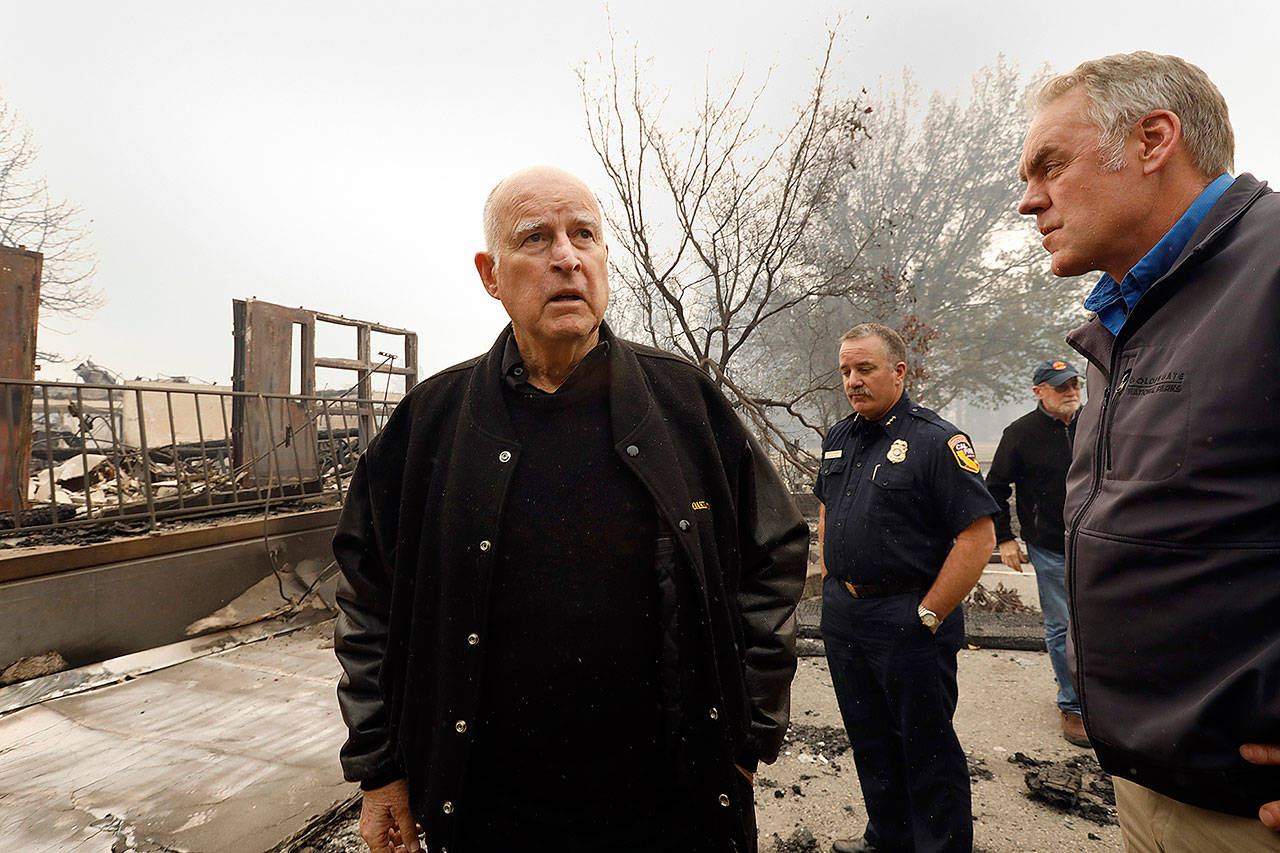By Dale Kasler
The Sacramento Bee
PARADISE, Calif. — The man who oversees America’s national forests for the Trump administration offered a novel idea Monday to help the fire-ravaged town of Paradise recover from the Camp Fire: Use timber from the nearby Plumas National Forest to rebuild.
“I don’t know what kind of legal hurdles we’re going to face,” Agriculture Secretary Sonny Perdue, whose agency runs the U.S. Forest Service, said after he and Interior Secretary Ryan Zinke toured Paradise, scene of California’s deadliest and most destructive wildfire ever.
Chances are the hurdles will be considerable.
Following President Donald Trump’s lead, Perdue and Zinke visited Paradise and surveyed the devastation from the Camp Fire to push an issue they’ve been talking about for months: Give the government greater leeway to thin out forested lands and reduce damage done by major wildfires.
Yet even though there’s fairly broad consensus among federal officials, Gov. Jerry Brown’s administration and even some environmentalists about the need to reduce tree density in forests, finding common ground on the details has proven elusive.
Exhibit A is the federal farm bill pending in Congress. The House has passed a new version of the bill that would give broad leeway for the Forest Service to proceed with “fuel reduction” projects without the extensive environmental reviews normally required by federal environmental law. The House bill would exempt most reviews on forestry projects as big as 6,000 acres.
But the Senate has refused to go along with those changes, and the legislation is in limbo. With Democrats poised to take the House in a few weeks, some analysts say it’s unlikely that the House version will prevail.
“The Dems are now able to bring some common sense and oversight to the administration’s agenda,” said Peter Nelson, federal lands director at the environmental group Defenders of Wildlife.
Nelson said many environmentalists agree with the concept of reducing fuel loads in overgrown forests. But he said he thinks the Trump administration is trying to go too far — and he believes Trump’s criticisms of environmentalists isn’t helping forge agreement.
“It’s a missed opportunity,” he said in a phone interview. “There’s lots of people wanting to work with the administration on this but now we’re feeling alienated because of all the finger pointing.”
Rep. Doug LaMalfa, a Republican whose district includes Paradise and who toured the sites with Zinke and Perdue, said he’s hopeful some version of the House bill can be enacted.
Monday’s visit was the third trip to Paradise by top-ranking officials of the administration, including a tour by the president himself. And once again, the administration urged Congress to give federal officials more authority to reduce fuels by extracting trees and performing “prescribed burns.”
“We’re here because the president’s priority is, ‘Fix it,’” Zinke said.
Asked about the recent National Climate Assessment, Zinke said he is still reading the report. But as he has in the past, he quickly pivoted from the question of climate change and said it is necessary to work on forest management issues.
Perdue backed that talking point during Monday’s visit.
“We’re not talking about clear cutting,” Perdue said.
And Vicki Christiansen, chief of the Forest Service, said: “We cannot waste a crisis. … We need to treat more acres.”
Following a roundtable discussion with forestry service officials and others at a Paradise church, Zinke and Perdue led reporters on a tour of Paradise Lake, about 3 miles north of town, where they said forest thinning projects in recent years helped reduce the damage when the Camp Fire ignited Nov. 8.
“This was as big of a success story (from the Camp Fire) that you can tell,” Calli-Jane Burch, of the Butte County Fire Safe Council, told Zinke and Perdue.
She pleaded with officials for more regulatory relief, saying California’s own environmental laws make it cumbersome to get thinning projects completed.
“Our hands are tied,” she said.
California Natural Resources Secretary John Laird, who joined the tour, said the state is working to complete a comprehensive environmental review that will enable large-scale forestry-management programs to move forward.
“We’ve been trying to get it done before we’re gone,” he said, alluding to time running out on the Brown administration. “We’ve been pushing it and we’re getting close.”
He noted that the governor signed a bill earlier this fall streamlining regulations on removing trees from private property, allocating $1 billion over five years from the state’s “cap and trade” carbon program to help move projects forward.


